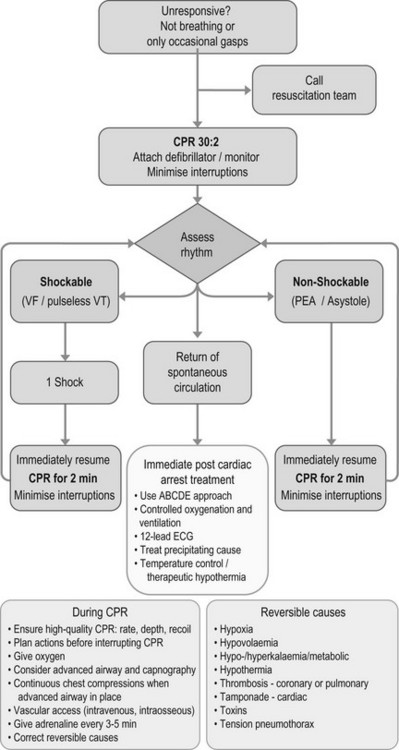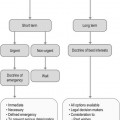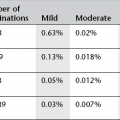Medical emergencies
Medical emergencies occurring in the radiology department may be due to:
1. Medication or radiographic contrast given
2. Procedure-related complications
3. Deterioration of pre-existing morbidities.
Patients may develop cardiac arrhythmias, hypotension, inadequate ventilation or adverse drug/radiographic contrast reactions. Complications arise from sedative drug administration, invasive procedures and human error; poor monitoring and organizational failings may contribute.
If a complication occurs, rapid recognition of the problem and effective management are essential. A call must be made to summon the hospital medical emergency or cardiac arrest team for any medical emergency event that is not immediately reversed or if ongoing care will be required.
The basic principles are summarized in the ABC of resuscitating the acutely ill patient:
1. Airway – ensuring a patent airway
2. Breathing – providing supplemental oxygen and adequate ventilation
3. Circulation – restoration of circulating volume.
These early interventions should proceed in parallel with diagnosis and definitive treatment of the underlying cause. If cardiac arrest is suspected, the adult advanced life support algorithm in Figure 19.1 should be followed.

Figure 19.1 Adult advanced life support algorithm. Reproduced with the kind permission of the Resuscitation Council (UK).
Equipment
A regularly checked and stocked resuscitation trolley should be kept in the radiology department and contain:
1. A defibrillator
2. A positive pressure breathing device (Ambu bag) and mask
3. Supplemental oxygen and oxygen delivery devices
4. Suction equipment
5. An intubation tray with airways, laryngoscopes and endotracheal tubes
6. Intravenous (i.v.) cannulas and i.v. fluids
7. Drugs:
(a) Sedative reversal drugs including naloxone and flumazenil
(b) Resuscitation drugs including adrenaline (epinephrine), atropine and hydrocortisone
8. Pulse oximeter
9. Non-invasive blood pressure device and appropriately sized brachial cuffs
10. An electrocardiograph.
Respiratory emergencies
In all cases it is essential to call for urgent anaesthetic assistance if the medical emergency event is not immediately reversed.
Respiratory depression
Sedative and analgesic drugs can cause depression of respiratory drive and compromise of the airway leading to hypoxia and hypercapnia. The clinical signs are:
1. Decreased, shallow, laboured breathing
2. Decreased oxygen saturations
3. In partial airway obstruction; snoring and paradoxical chest wall movement.
The patient should immediately be placed in the supine position. If the airway is compromised it can be maintained by opening the mouth, tilting and extending the head, and lifting the chin. Supplemental oxygen must be provided. If respiratory depression is due to sedative drugs then reversal agents should be considered.
Stay updated, free articles. Join our Telegram channel

Full access? Get Clinical Tree






